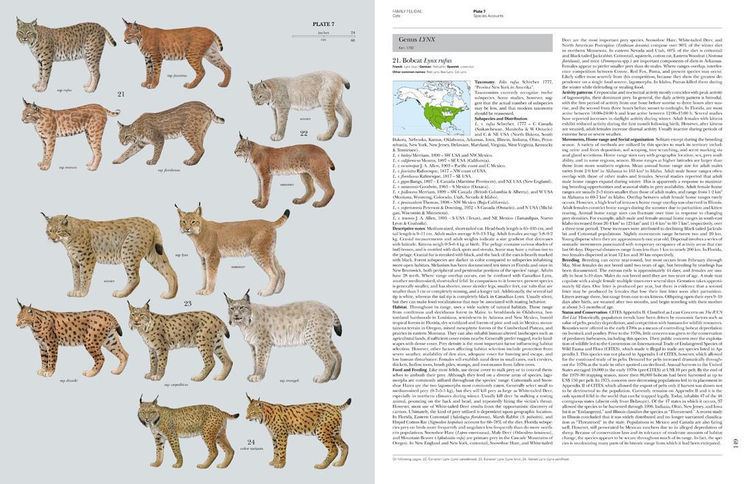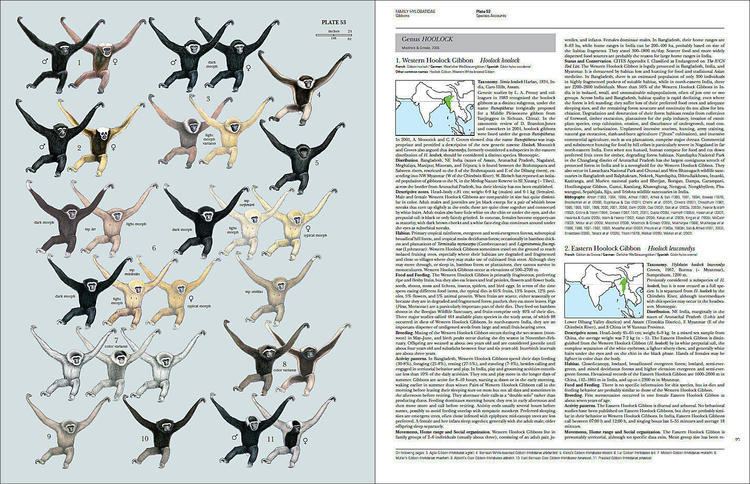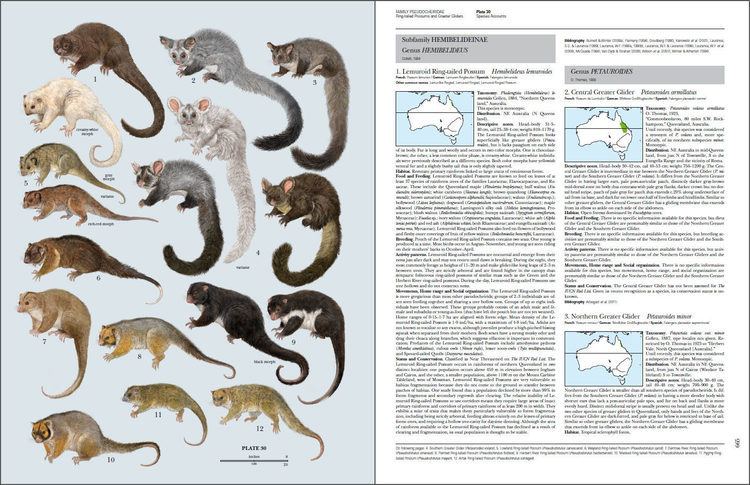 | ||
Books Handbook of the Mammals of the World - Volume 1 Similar Handbook of the Birds of the World, Birds of South Asia. The Ripley Guide, Lynx Edicions | ||
Handbook of the Mammals of the World (HMW) is a book series from the publisher Lynx Edicions. The nine volumes will be published from 2009. Each mammal family is assessed in a full text introduction with photographs and each species has a text account with a distribution map and illustrations on a plate. This is the second major project by Lynx Edicions since the release of the Handbook of the Birds of the World in 1992. The chief editors are Russell Mittermeier and Don E. Wilson in association with Conservation International, the Texas A&M University and the IUCN. Don E. Wilson is also editor of the reference work Mammal Species of the World.
Contents
- Volume 1 Carnivores published in May 2009
- Volume 2 Hoofed Mammals published in August 2011
- Volume 3 Primates published in April 2013
- Volume 4 Sea Mammals published in July 2014
- Volume 5 Marsupials published in June 2015
- Volume 6 Lagomorphs and Rodents I published in July 2016
- Opinions
- References

Volume 1: Carnivores (published in May 2009)
With an introduction to the class Mammalia by Don E. Wilson
The first volume is devoted to Carnivora. It covers 13 families and the details to the taxonomy, range, habitat, reproduction, behavior, and conservation status of 245 species. It has more than 400 colour photographs and 257 distribution maps. The 33 colour plates are created by Catalan artist Toni Llobet. This book mentioned the olinguito or Andean olingo for the first time, a species from Ecuador and Colombia, which was officially described in 2013.
Groups covered in this volume are:

Other details: Size: 31 x 24 cm. Pages: 728 pp. ISBN 978-84-96553-49-1
Volume 2: Hoofed Mammals (published in August 2011)

The second volume is devoted to the ungulates (hoofed mammals). It covers 54 genera, 17 families in six orders and the details to the taxonomy, range, habitat, reproduction, behaviour, and conservation status of 279 species. It has 664 colour photographs and 433 distribution maps. The 56 colour plates are created by Catalan artist Toni Llobet.
Groups covered in this volume are:
Other details: Size: 31 x 24 cm. Pages: 886 pp. ISBN 978-84-96553-77-4
Volume 3: Primates (published in April 2013)
The third volume is devoted to the primates. It covers 17 families and the details to the taxonomy, range, habitat, reproduction, behaviour, and conservation status of 470 species. The 57 colour plates are created by English wildlife artist Stephen D. Nash. Edited by Russell A. Mittermeier, Anthony B. Rylands, Don E. Wilson.
Groups covered in this volume are:
Other details: Size: 31 x 24 cm. Pages: 951 pp. ISBN 978-84-96553-89-7
Volume 4: Sea Mammals (published in July 2014)
The fourth volume is devoted to marine mammals, which include the largest mammals on earth, the whales, as well as dolphins, ear seals, walrus, earless seals, dugongs, and manatees. It covers 19 families and the details to the taxonomy, range, habitat, reproduction, behavior, and conservation status of 147 species. The 30 colour plates are created by Toni Llobet.
Groups covered in this volume are:
Other details: Size: 31 x 24 cm. Pages: 614 pp. ISBN 978-84-96553-93-4
Volume 5: Marsupials (published in June 2015)
The fifth volume is devoted to the marsupials, echidnas, platypus, and opossums. The 44 colour plates are created by Toni Llobet. It covers the details to the taxonomy, range, habitat, reproduction, behaviour, and conservation status of 375 species from 21 families in eight orders. The introductory chapter by Kristofer Helgen is about recently extinct marsupials like the thylacine.
Groups covered in this volume are:
Other details: Size: 31 x 24 cm. Pages: 800 pp. ISBN 978-84-96553-99-6
Volume 6: Lagomorphs and Rodents I (published in July 2016)
Initially it was intended to publish only one volume on lagomorphs and rodents. But due to the large number of described rodents Lynx Edicions organized a survey from summer to autumn 2015 in which a majority of customers decided in favor of two volumes. The sixth volume is devoted to the lagomorphs and 25 families of rodents, including the hares, pikas, chinchillas, the Laotian rock rat (a living fossil), the capybara (the largest extant rodent), and the diverse group of squirrels. The 60 colour plates are created by Toni Llobet. It covers the details to the taxonomy, range, habitat, reproduction, behaviour, and conservation status of 798 species from 27 families in two orders. It includes a special chapter on the overview of rodents, on morphology, taxonomy, and evolutionary history; why rodents are studied; and tools for studying them. Edited by Don E. Wilson, Thomas E. Lacher Jr, and Russell A. Mittermeier.
Groups covered in this volume are:
Other details: Size: 31 x 24 cm. Pages: 988 pp. ISBN 978-84-941892-3-4
Opinions
It is believed, that the handbook is highly influential and will serve as a guideline for taxonomists, conservationists, ecologists, biodiversity managers, and politicians. However, there are controversies. Especially, the taxonomic system, which has been used for the prominent family Bovidae (Volume 2), is not generally accepted. Heller et al. criticise, that the revised bovid species list, which doubled the amount of recognized bovid species, is based only on one primary source. This increase was mainly due to an expanded species concept (PSC concept), not on new available data sets. The handbook distinguishes, for example, 11 species of klipspringer, but the morphological variations within each of these proposed species are often greater than between them. In addition, the taxonomy is criticised to be inconsistent, since many taxa, like the different giraffe forms are treated as subspecies of one single species, despite the fact, that some are clearly distinguishable. The authors warn, that taxonomic inflation of species could impede conservation efforts.
